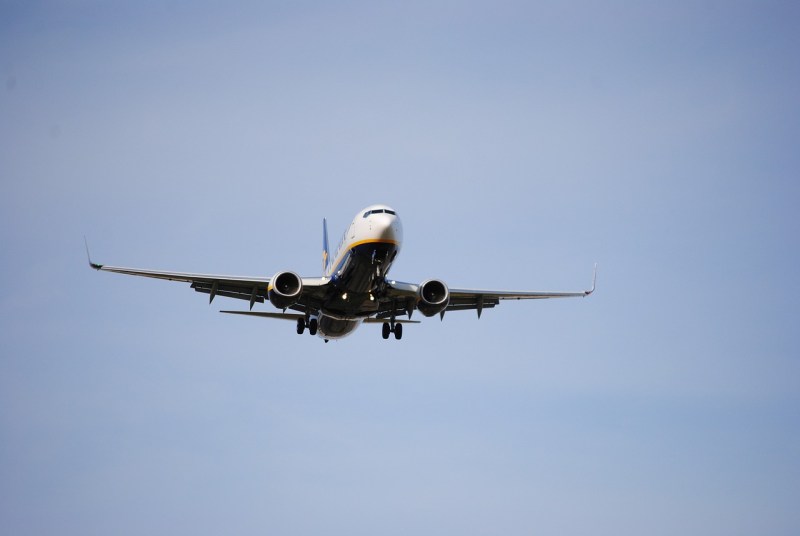Traveling should be an adventure, but if something happens that could threaten your safety, such as extreme weather or security issues when traveling abroad, I know that I would want to have as much reliable information as possible so I can make the best choices to stay safe while trying to get home if that’s necessary.
While most international travelers are familiar with programs like TSA Precheck and TSA Global Entry, there’s a third U.S. government program that helps Americans traveling out of the country called the Smart Traveler Enrollment Program (STEP). If you’re abroad and the unthinkable happens — injury, illness, a lost passport, or even a global emergency, signing up for the free STEP program could literally save your life. I’ve signed up for the program, so keep reading to find out why you should take advantage of it, too.
What is STEP?

Enrolling in STEP isn’t just about being informed; it’s about staying connected in times of need. And it’s free. When you sign up, you receive real-time updates, country-specific travel advisories, and information about U.S. embassy events. It’s a personalized safety net that keeps you in the loop about the area you’re traveling to, whether there’s a safety concern or just an embassy-hosted town hall meeting.
In an emergency, STEP can quickly facilitate communication between you and the nearest U.S. embassy, ensuring that assistance is just a step away. Additionally, it serves as a link so your family and friends back home can reach you in an emergency.
This type of connection is especially essential if your travel destination is in an area of political instability or if violence breaks out nearby — STEP ensures you receive real-time updates from the nearest U.S. consulate. It’s also a lifeline if you’re traveling off the grid or are in a particularly remote area, and it can also help you stay safe and well-informed during large-scale events.
Is STEP just like TSA Precheck?

No, it’s not. While TSA Precheck streamlines airport security procedures for domestic flights, STEP, offered by the U.S. Department of State, focuses on providing real-time safety updates and assistance to U.S. citizens traveling abroad. It creates a crucial communication link between American travelers and the nearest U.S. embassy or consulate during emergencies.
I know what you’re thinking: What about TSA Global Entry? It’s great, but it’s different. TSA Global Entry expedites international arrivals by facilitating a faster customs process. So, like TSA Precheck, it also focuses mainly on airport efficiency.
STEP is an additional resource that provides an extra layer of security for all travelers, regardless of their destination.
How to register for STEP

Getting started with STEP is easy. Setting up an account takes about five minutes, and registering a trip takes about one minute.
Here’s how it works: on the STEP website, create an account and input your personal details and emergency contacts.
That’s it. This minimal investment of time will pay off when you need urgent assistance while traveling abroad.
Consider STEP as a kind of travel insurance for unforeseen circumstances. If all goes smoothly, you might not even realize it’s there. But if you find yourself in a tight spot, the STEP notifications can save your life. The goal is simple: ensure you’re safe and accounted for, no matter where your adventures take you.
TSA Precheck and Global Entry may expedite your airport experience, but STEP ensures your safety and peace of mind throughout your entire journey. So, take that extra step before you embark on your next adventure.
More important info to know
One other thing to know: As of September 2024, the State Department launched a new version of the STEP program, and you will need to re-enroll at the MyTravelGov website to continue receiving updates. “The new STEP platform allows you to use a login.gov account to customize your subscriptions and to receive country-specific email alerts during the timeframe of your choice. You can enroll multiple trips or locations at once and modify your subscriptions or unenroll at any time,” the State Department said in a release. “Enrolling in STEP makes it easier for the nearest U.S embassy or consulate to contact you during an emergency and to send you safety and security alerts. We strongly encourage all U.S. citizens traveling or living abroad to enroll or re-enroll today to take advantage of the new functionality.”
Other ways to get official info while traveling

The STEP program is not the only way the U.S. State Department distributes safety and security information to citizens traveling abroad. While the STEP program is likely the most direct way to get vital updates, you can also use the following methods to get important updates while traveling.
The State Department has a social media presence on X (formally Twitter) and Facebook at @TravelGov. When travel advisories and alerts are issued, the department will post them on those social media accounts. Additionally, you could bookmark the travel.state.gov website to get a list of all current travel advisories by country (it’s a good idea to check this list before you travel as well, to make sure there are no issues where you’re going).
You can also sign up to receive updates from the State Department’s media team, which will email updates on any major changes to travel advisories or if a travel advisory has been reissued.




